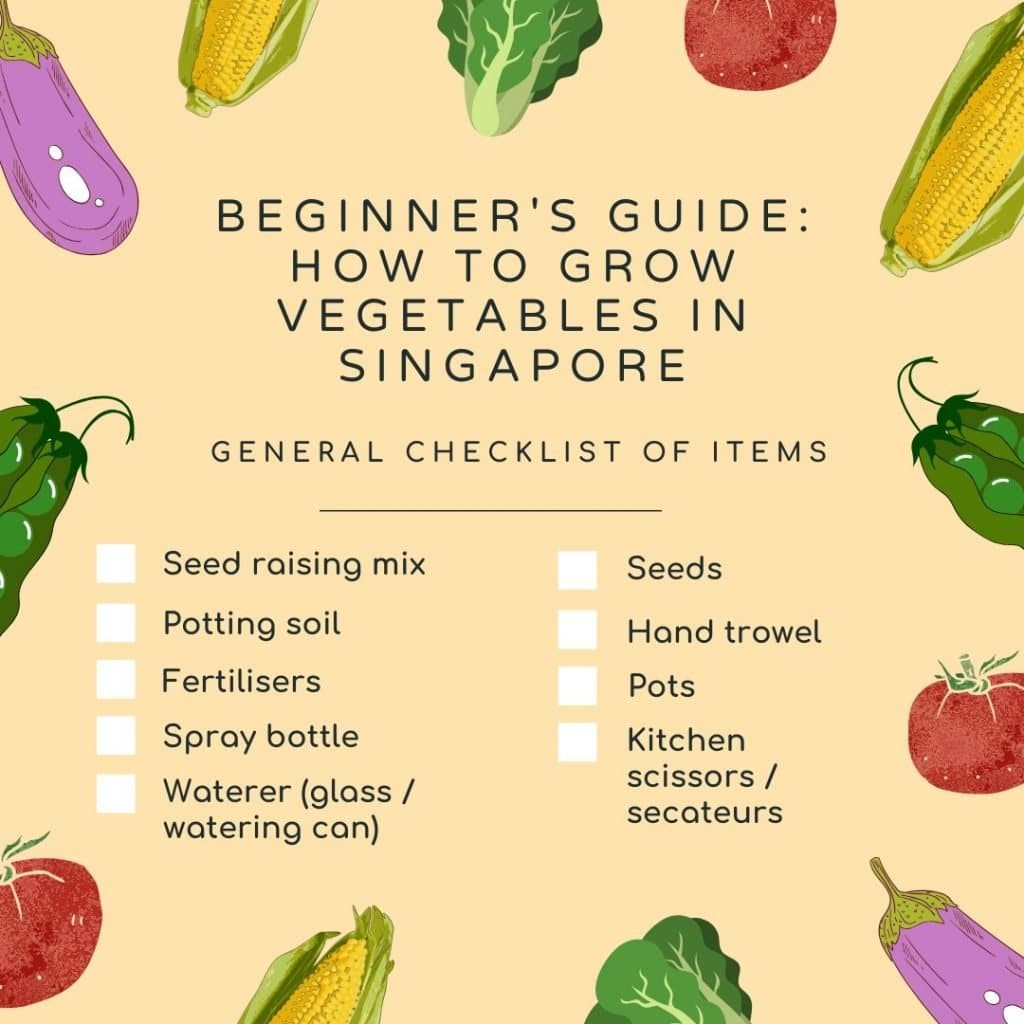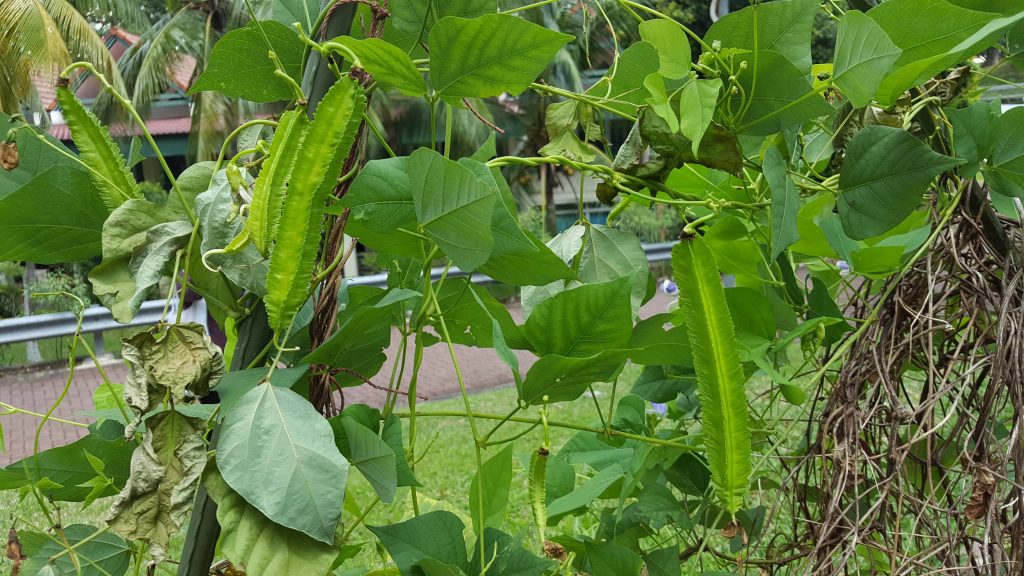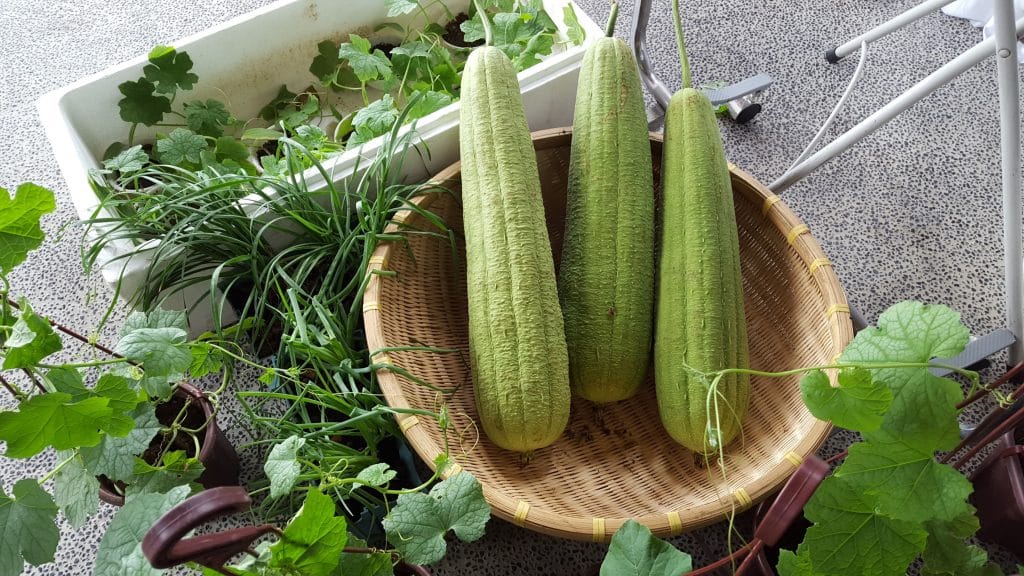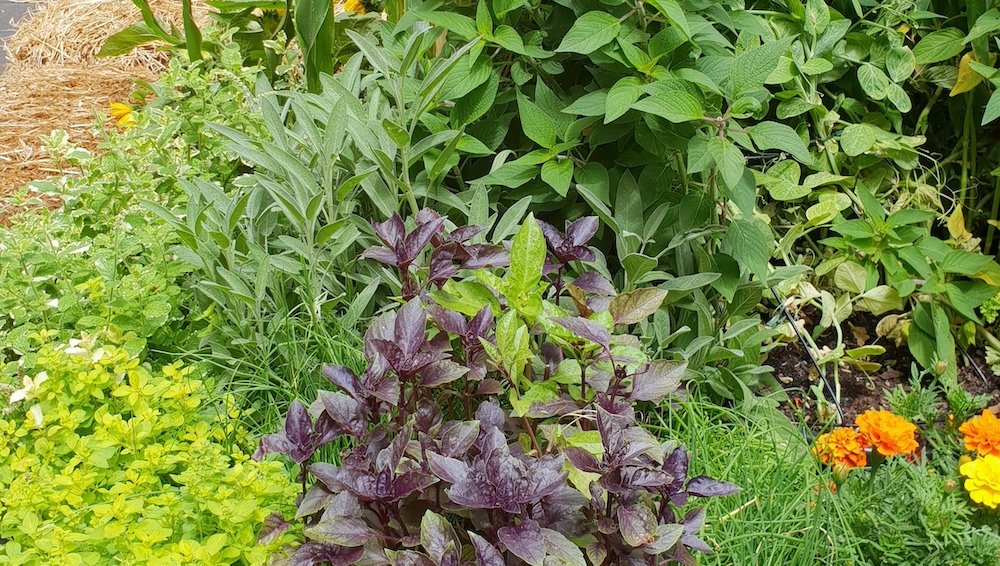Want to learn how to grow vegetables in Singapore? If you are starting from scratch, here’s a beginner’s guide! There is a lot to take in so let’s start from the basics.
When I hold workshops on this topic or about soil, I often get feedback that there is too much information to retain all at once. It is important to note that growing vegetables is a journey and it’s difficult to learn everything in one sitting because it is easiest to learn when you can reference the information to real life experiences. The amount of sun, wind moisture, or temperature – or microclimate in general – is different from house to house. Trial and error is important, as are observational skills.
Getting Started: Grow Vegetables in Singapore
So what will you need? Some seeds, soil, pots and garden tools. Here’s a general checklist that you can refer to:

At this point you may be asking, “Where should I get seeds from?” or “What is seed raising mix?”, “How much should I water my plant?”,”What fertilisers should I buy?” or “Where to buy garden tools?”. I will gradually elaborate these details further in the post. But first, I will talk about how to get started when you grow vegetables in Singapore.
Which Vegetables Are Easy to Grow in Singapore?

In short, plants native to Singapore, the region and the tropics will always fare better than exotic vegetable varieties. For beginners, I always recommend growing herbs and green leafy vegetables before venturing into fruiting vegetables although I know that people want to start off by growing tomatoes. If you are curious and wish to do so, you can read this post on growing tomatoes successfully in Singapore. Cherry tomatoes do best in our climate, and pear tomatoes fare well too. Beefsteak tomatoes rarely do well here but Black Sea Man is a great one to try.
Herbs like dill, Thai basil, Italian basil are easy starter plants. Easy green leafy vegetables to grow from seed include kang kong, bayam (spinach), malabar spinach, lettuce (opt for loose-leaf and not tight heads), nai bai (tatsoi), and pak choy.
If buying herb and vegetable plants or swapping cuttings, some easy ones to grow at home include mint, curry leaf, laksa leaf, sawtooth coriander, kaffir lime leaf, pandan leaf, Indian borage and chives, longevity spinach, Chinese violets, Surinam spinach, Brazilian spinach and moringa. Spices like lemongrass, wild pepper, ginger and turmeric are also easy. Some of these plants are water-loving and you can consider growing those which favour the same conditions together.
Many people have issues growing rosemary at home, and the key to this is drainage. Its preference is also to have a lot of sun. After purchasing plants from the nursery or in some cases, the supermarket, there is a high probability that you need to repot the plant into a soil mix that includes sand, perlite and/or pumice, in order to recreate its preferred growing conditions in the Mediterranean.
In other words, if you can provide the ideal microclimate to plants, you can grow these vegetables in Singapore. There are some limitations to this of course. Living in a tropical climate means that we are not able to grow certain plants from subtropical and temperate regions, or get it to flower and fruit successfully.

If you are feeling more adventurous, some easy fruiting plants you can consider growing from seed include beans (green beans, winged beans), bittergourd, okra, gooseberries and luffa (let it dry on the vine for sponges). Chilli, eggplants and tomatoes require a bit of trial and error to get it right when growing from seed. It is not unusual to experience whitefly among these plants, this pest can be found on the undersides of leaves.
Pest management can involve the use of sprays, yellow sticky traps (you may end up trapping beneficial insects or even lizards), use of exclusion netting, eradicating ants (yes, they can bring pests to your plants), or by plain old squashing with your hands. There are many other pests that you will be acquainted with in due time as part of your gardening journey.

